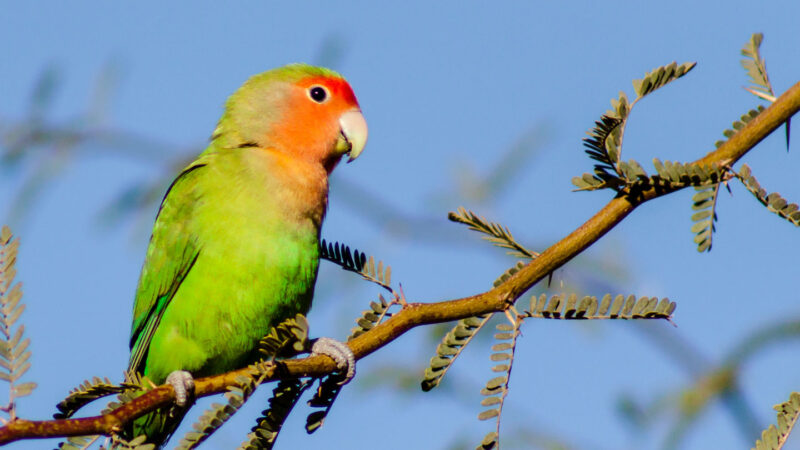Beakiation (noun, “Beek-ee-AY-shun”)
Beakiation is a technique that parrots use to move along thin branches. Scientists recently discovered beakiation in experiments with a parrot species called rosy-faced lovebirds (Agapornis roseicollis). These birds are native to dry woodlands in southwestern Africa.
To beakiate, a parrot first hangs from a branch with both feet. Second, the bird stretches its neck to grab a spot on the branch to the side of its feet with its beak. Third, the parrot swings its feet toward the other side of its beak to grab the branch in a new spot. The parrot repeats this motion to sidestep its way down the branch.
This rosy-faced lovebird (Agapornis roseicollis) moves across an obstacle course that scientists set up in a lab to study beakiation. The bird stretches its neck and grabs onto a thin bar. Then, it releases the bar from its feet and swings its body to the side. Finally, it grasps the bar again with its feet in a new spot.
The newly found maneuver is similar to a motion seen in primates called “brachiation.” That’s when a primate uses its arms to swing between tree limbs.
More research is needed to find out whether other parrot species also beakiate. And how much these birds might use the trick in the wild. Beakiation may help parrots navigate forests that are too dense to fly through. The technique highlights how many different tasks birds can use their beaks for. And it underscores just how smart parrot species can be.
In a sentence
Parrot species have shown a whole bunch of clever behaviors besides beakiation.
Check out the full list of Scientists Say.




